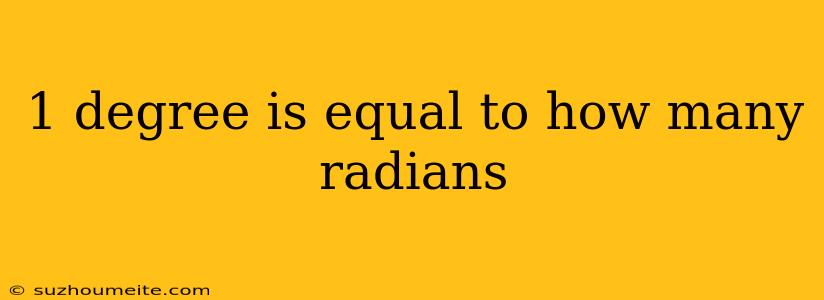1 Degree is Equal to How Many Radians?
In mathematics, we often encounter two types of measurement units for angles: degrees and radians. While degrees are more commonly used in everyday life, radians are the standard unit of measurement in mathematics and physics. But have you ever wondered how to convert between these two units? In this article, we'll explore the answer to the question: 1 degree is equal to how many radians?
What is a Radian?
Before we dive into the conversion, let's first define what a radian is. A radian is a unit of measurement for angles, defined as the angle subtended at the center of a circle by an arc equal in length to the radius of the circle. In other words, if you were to draw an arc on a circle with a length equal to the radius of the circle, the angle subtended at the center of the circle would be 1 radian.
Conversion from Degrees to Radians
Now, let's get to the conversion. We know that there are 360 degrees in a full circle. Similarly, there are 2π (approximately 6.28) radians in a full circle. Using this information, we can set up a proportion to convert between degrees and radians:
1 degree = π/180 radians
To convert a degree measurement to radians, we can multiply it by π/180. For example, to convert 30 degrees to radians, we would multiply 30 by π/180, which gives us approximately 0.524 radians.
Why Radians Matter
So why do radians matter? In mathematics and physics, radians are often preferred over degrees because they provide a more intuitive and meaningful way of measuring angles. Radians are also essential in calculus, trigonometry, and geometry, as they simplify many mathematical formulas and equations.
Conclusion
In conclusion, 1 degree is equal to approximately 0.01745 radians. Understanding the conversion between degrees and radians is crucial in mathematics and physics, as it enables us to work with angles in a more meaningful and intuitive way. Whether you're a student, teacher, or simply a math enthusiast, grasping this concept can open doors to new mathematical discoveries and insights.
